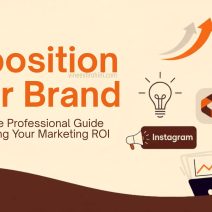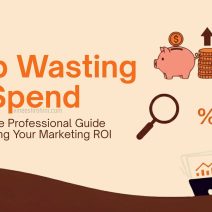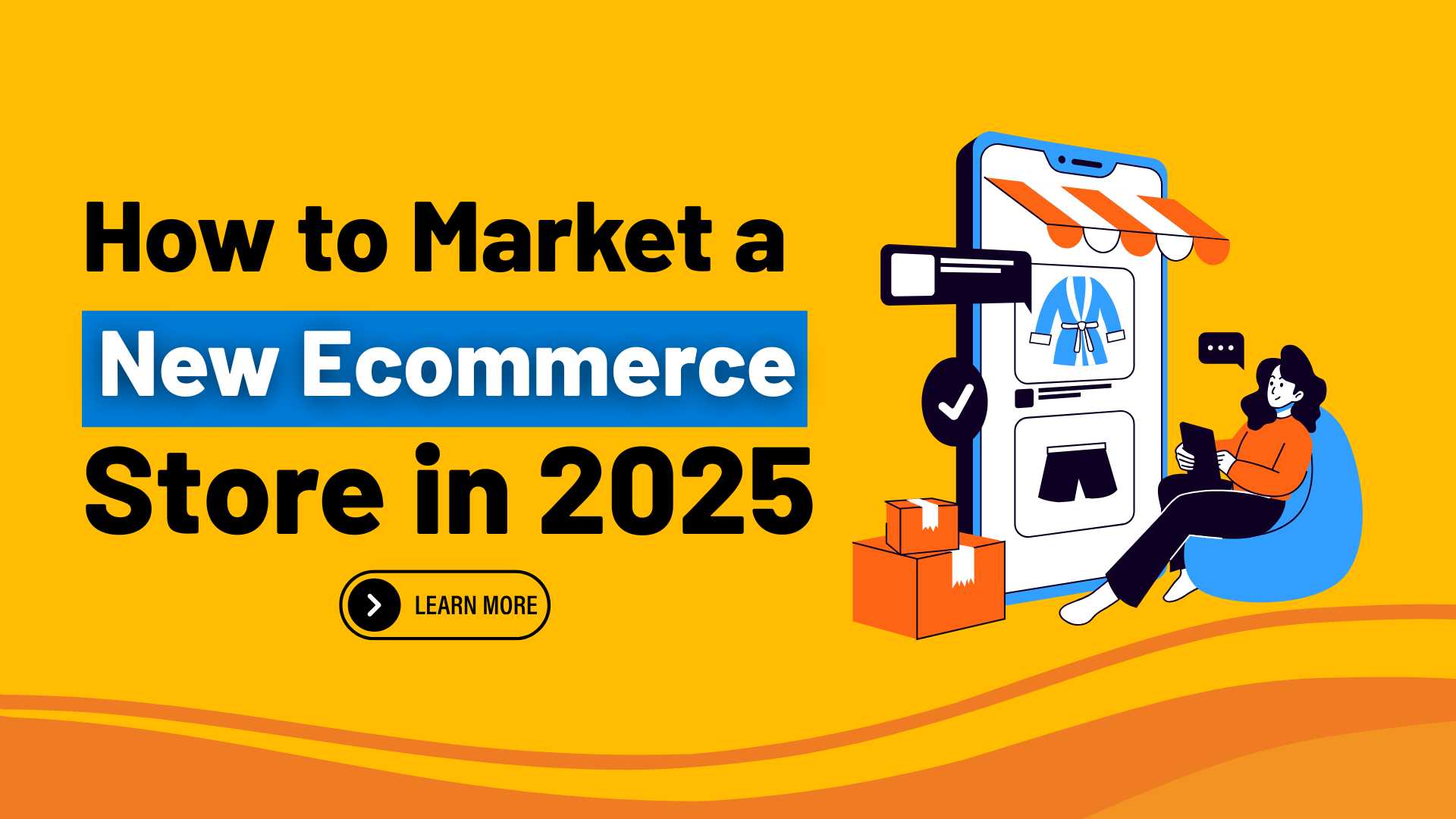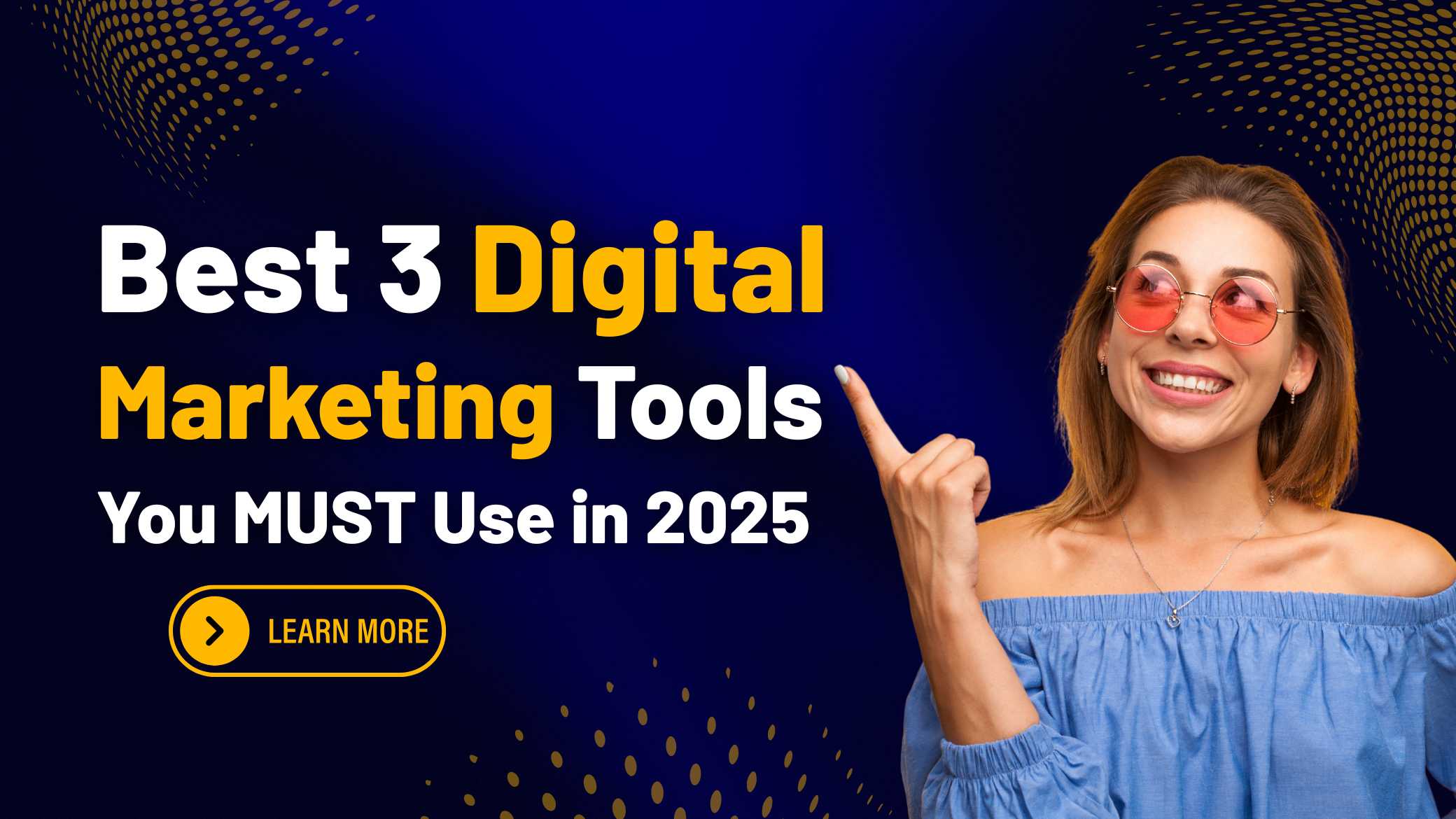How to Market a New Ecommerce Store : Launching an eCommerce store in 2025 is both an exciting and challenging endeavor. With the exponential growth of online shopping and evolving consumer behaviors, the eCommerce landscape has become fiercely competitive. Traditional marketing strategies alone no longer guarantee success. Businesses now need an intelligent blend of AI-powered automation, omnichannel strategies, data-driven personalization, and authentic branding to stand out. Whether you’re starting a niche dropshipping store or building a full-fledged D2C brand, knowing how to market your new eCommerce store effectively is critical to gaining traction and generating consistent revenue.
Table of Contents
This comprehensive guide outlines the most effective, updated, and high-converting digital marketing strategies to successfully market a new eCommerce business in 2025.
Define Your Brand Positioning and Unique Selling Proposition (USP)

Before launching any campaign, define your brand positioning and what sets your store apart in the crowded marketplace. Your Unique Selling Proposition (USP) must be specific, valuable, and relevant to your target audience.
Also Read : Affiliate Marketing on Pinterest
Whether it’s sustainable packaging, AI-enhanced personalization, ultra-fast shipping, or product exclusivity, ensure your messaging reflects it consistently across your website and marketing channels. A strong brand identity and clearly communicated value proposition are essential for building trust and attracting attention.
Create a Conversion-Optimized eCommerce Website
In 2025, your website is not just an online storefront—it’s your primary sales tool. Ensure your website is responsive, mobile-first, fast-loading, and optimized for user experience. Use AI-powered recommendation engines, dynamic product filtering, real-time chat support, and one-click checkout options to minimize friction. Integrate trust signals like customer reviews, badges, and security icons prominently. A/B test landing pages, call-to-action (CTA) buttons, and checkout flows to continually improve conversion rates. Your design should be clean, visually appealing, and aligned with your brand voice.
Leverage AI-Powered SEO Strategies
Search Engine Optimization (SEO) remains a cornerstone of long-term traffic generation. In 2025, AI plays a significant role in optimizing content, meta tags, internal linking, and schema markup. Use AI-driven tools like Surfer SEO, Clearscope, or ChatGPT-powered plugins to create high-ranking product descriptions, blog posts, and category content. Focus on long-tail keywords, buyer intent queries, and semantic search optimization. Implement structured data to enhance rich snippets and voice search compatibility. Build internal linking structures and backlinks from authoritative sources to improve your domain authority and organic visibility.
Launch a Data-Driven Social Media Strategy
Social media continues to be a powerful tool for brand awareness, engagement, and sales. Develop a consistent and creative content strategy tailored to each platform’s trends—Instagram Reels, TikTok Shorts, Pinterest Pins, and Facebook Stories. In 2025, AI-powered content schedulers and performance analyzers help automate and fine-tune campaigns. Incorporate user-generated content (UGC), influencer partnerships, and real-time community interactions to build trust and authenticity. Run highly-targeted ad campaigns using platform-specific data insights and retargeting tools. Use social commerce features like Instagram Shop, Facebook Marketplace, and TikTok Shop to allow in-app purchases.
Invest in Paid Advertising and Smart Retargeting

Paid ads are essential to jumpstart traffic and conversions for new eCommerce stores. Focus on Google Shopping Ads, Performance Max campaigns, Facebook Ads, TikTok Ads, and influencer-boosted sponsored content. Use laser-targeted audience segmentation to reach buyers based on demographics, behavior, interests, and purchasing intent. Incorporate AI-based retargeting platforms like AdRoll, Criteo, or Meta Advantage+ to re-engage bounce traffic and abandoned cart users. Dynamic creative optimization (DCO) tools automatically test ad variations to find the highest-converting creatives. Maintain a balance between acquisition and retargeting budgets for optimal ROAS.
Create a Powerful Email and SMS Marketing Funnel
Despite emerging platforms, email and SMS marketing remain top-performing channels for ROI. Set up automated flows such as welcome sequences, cart abandonment recovery, post-purchase thank-yous, upsell campaigns, and loyalty rewards. Use platforms like Klaviyo, Omnisend, or Mailmodo for personalized, behavior-triggered messaging. Combine email and SMS for better reach—send limited-time offers, restock alerts, and exclusive discounts directly to customers’ inboxes and phones. Personalize subject lines and content using customer data to boost open rates, CTRs, and conversions. In 2025, interactive email formats and AMP-enabled content improve engagement.
Use Influencer and Affiliate Marketing to Build Social Proof
Influencer and affiliate marketing help your brand earn credibility and reach new audiences fast. Partner with nano, micro, and mid-tier influencers relevant to your niche rather than focusing solely on high-profile names. Use influencer marketplaces or AI-powered discovery platforms to find partners with genuine engagement and a loyal following. Offer affiliate programs with attractive commissions and trackable URLs using platforms like Refersion, Impact, or Tapfiliate. Encourage influencers to create unboxing videos, tutorials, and product reviews. Authentic storytelling and UGC from influencers can significantly impact conversion rates and customer trust.
Publish High-Quality, Long-Form Blog Content
Content marketing in 2025 still holds immense value—especially long-form, high-ranking blog posts optimized for SEO and user value. Publish comparison guides, buyer’s guides, how-to articles, listicles, case studies, and product roundups. Incorporate trending keywords and address common customer pain points. Update old posts regularly to maintain rankings. Use visuals, videos, infographics, and interactive elements to increase dwell time. Promote your blog posts across email, social media, and outreach channels to earn backlinks and amplify visibility. Expert-driven content builds trust, improves rankings, and nurtures cold leads through the sales funnel.
Use Live Shopping and Augmented Reality (AR) Experiences

Interactive commerce is booming in 2025. Integrate live shopping tools on your website or social media pages to allow real-time product demonstrations, Q&A sessions, and instant purchases. Platforms like Bambuser, ShopShops, and Amazon Live provide tools to host engaging live-stream shopping experiences. Augmented Reality (AR) tools like Shopify AR, Google Swirl, and WebAR allow customers to virtually try on products, visualize furniture in their space, or preview cosmetics on their face. These immersive technologies reduce purchase hesitation and increase buyer confidence, especially for fashion, beauty, and home decor brands.
Offer Loyalty Programs and Referral Incentives
Customer retention is more cost-effective than acquisition. Launch a well-structured loyalty program that rewards customers for repeat purchases, referrals, social shares, and reviews. Use platforms like Smile.io, Yotpo, or LoyaltyLion to gamify the shopping experience with points, badges, and tiered rewards. Combine loyalty perks with SMS/email drip campaigns to keep users engaged. Referral programs help you tap into your customers’ networks. Offer incentives like discounts, store credits, or cash rewards to both the referrer and referee. In 2025, referral automation tools track user behavior and optimize messaging for higher participation rates.
Build Strategic Partnerships and Collaborations
Collaborating with other eCommerce brands, influencers, creators, or community organizations allows you to tap into new audiences. Joint giveaways, bundled product campaigns, cross-promotions, or co-branded content offer mutual benefits and expand brand reach. Ensure your partners align with your brand values and target similar buyer personas. Use collaborative email campaigns and social shout-outs to cross-pollinate followers and subscribers. Partnering with non-competing but complementary businesses helps drive high-quality, trust-based traffic to your store.
Optimize for Voice and Visual Search
In 2025, voice and visual search optimization is critical. More users are searching for products using voice assistants and image-based search apps. Optimize your product listings and blog content for voice search by incorporating conversational keywords, FAQs, and structured markup. Enable visual search by tagging product images with metadata, ALT text, and schema. Integrate tools like Google Lens and Pinterest Lens compatibility to allow customers to search and shop using images. Voice and visual search improve accessibility, convenience, and the mobile shopping experience.
Leverage AI Chatbots and Conversational Commerce
AI-powered chatbots are essential for real-time engagement and support. Install intelligent chatbots on your site and integrate with WhatsApp Business, Facebook Messenger, and Instagram DMs. These bots handle common queries, recommend products, assist with order tracking, and reduce cart abandonment. Platforms like Tidio, Drift, or Intercom allow multi-language support and context-aware conversation flows. In 2025, conversational commerce has evolved to include voice-enabled bots, video calls with agents, and seamless transitions from AI to human reps when needed. This boosts customer satisfaction and drives higher conversions.
Utilize User Reviews, Testimonials, and Social Proof
Today’s buyers rely heavily on social proof. Encourage happy customers to leave reviews and ratings on product pages, third-party platforms, and social media. Use widgets from platforms like Trustpilot, Judge.me, or Loox to display reviews dynamically on your website. Feature video testimonials, before-and-after shots, and user-generated photos. Share these reviews across your email newsletters and social campaigns. Social proof creates trust, combats buyer hesitation, and improves SEO. Respond to negative reviews professionally to demonstrate customer care and integrity.
Track KPIs and Analyze Performance in Real-Time
Success in eCommerce marketing depends on data. Use analytics tools like Google Analytics 4, Hotjar, Shopify Reports, and Meta Pixel to track user behavior, campaign performance, and sales funnels. Monitor key performance indicators (KPIs) like conversion rates, customer acquisition cost (CAC), average order value (AOV), lifetime value (LTV), return on ad spend (ROAS), and customer retention rates. Run cohort analyses to understand buying patterns and segmentation. In 2025, AI-driven analytics dashboards provide predictive insights and actionable recommendations to help you scale faster and smarter.
Localize and Personalize Your Marketing

If you’re targeting international or diverse markets, localization is key. Translate your content, pricing, and customer service into native languages. Offer local currencies, payment methods, and shipping options. Use geo-targeted ad campaigns and promotions to cater to regional holidays and preferences. Personalization also plays a major role—customize product recommendations, email content, and discounts based on individual user behavior, preferences, and purchase history. Customers expect brands to “know them” in 2025, and personalization can significantly boost loyalty and conversion.
How to Market a New Ecommerce Store – Conclusion :
Marketing a new eCommerce store in 2025 requires more than just having a great product—it demands a 360-degree approach powered by technology, personalization, creativity, and agility.
Buy Now : 47 Ways to Make Money Online
From building a user-friendly website and mastering SEO to leveraging social media, live shopping, influencer collaborations, and AI tools, you must strategically utilize every available channel to reach your audience. The brands that thrive in 2025 will be those that embrace innovation, provide exceptional customer experiences, and remain relentlessly data-driven. Follow the strategies outlined in this guide, and you’ll be on the path to building a profitable and sustainable eCommerce business in the new digital era.
Keywords : How to Market a New eCommerce Store – How to Market a New eCommerce Store 2025 – How to Market a New eCommerce Store guide , How to Market a New eCommerce Store in india , How to Market a New eCommerce Stores








